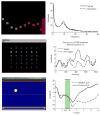Brain-computer interfaces and communication in paralysis: extinction of goal directed thinking in completely paralysed patients?
- PMID: 18824406
- PMCID: PMC2644824
- DOI: 10.1016/j.clinph.2008.06.019
Brain-computer interfaces and communication in paralysis: extinction of goal directed thinking in completely paralysed patients?
Abstract
Objective: To investigate the relationship between physical impairment and brain-computer interface (BCI) performance.
Method: We present a meta-analysis of 29 patients with amyotrophic lateral sclerosis and six patients with other severe neurological diseases in different stages of physical impairment who were trained with a BCI. In most cases voluntary regulation of slow cortical potentials has been used as input signal for BCI-control. More recently sensorimotor rhythms and the P300 event-related brain potential were recorded.
Results: A strong correlation has been found between physical impairment and BCI performance, indicating that performance worsens as impairment increases. Seven patients were in the complete locked-in state (CLIS) with no communication possible. After removal of these patients from the analysis, the relationship between physical impairment and BCI performance disappeared. The lack of a relation between physical impairment and BCI performance was confirmed when adding BCI data of patients from other BCI research groups.
Conclusions: Basic communication (yes/no) was not restored in any of the CLIS patients with a BCI. Whether locked-in patients can transfer learned brain control to the CLIS remains an open empirical question.
Significance: Voluntary brain regulation for communication is possible in all stages of paralysis except the CLIS.
Figures


References
-
- Birbaumer N. Breaking the silence: Brain-computer interfaces (BCI) for communication and motor control. Psychophysiology. 2006;43:517–32. - PubMed
-
- Birbaumer N, Elbert T, Canavan AGM, Rockstroh B. Slow potentials of the cerebral cortex and behavior. Physiological Reviews. 1990;70:1–41. - PubMed
-
- Birbaumer N, Ghanayim N, Hinterberger T, Iversen I, Kotchoubey B, Kübler A, et al. A spelling device for the paralysed. Nature. 1999;398:297–8. - PubMed
-
- Choularton S, Dale R. User responses to speech recognition errors: consistency of behaviour across domains. 10th Australian International Conference on Speech Science & Technology; Macquire University, Sydney. Australia: Australian Speech Science & Technology Association Inc.; 2004.
-
- Dworkin BR, Miller NE. Failure to replicate visceral learning in the acute curarized rat preparation. Behav Neurosci. 1986;100:299–314. - PubMed
Publication types
MeSH terms
Grants and funding
LinkOut - more resources
Full Text Sources
Other Literature Sources
Medical
Miscellaneous

